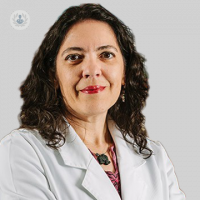Risk of pregnancy by IVF
Written by:Since the first IVF will take place in the world 37 years ago, this technique is performed routinely in many countries. Thanks to it has been made more than 4 million births in the world.
IVF has become a routine technique in many countries, becoming a safe method to get pregnant. Moreover, it has not been shown that the fact undergo fertilization procedure increases the risk of some cancers. There is also no evidence to show that the increase in early fetal loss in vitro fertilization.
Thanks to new technologies and the recent addition of egg vitrification, oncological patients preserve their fertility may arise when they can develop a pregnancy.
Risks of IVF
However, it has been shown that patients undergoing IVF are patients with increased risk obstetrical. The risk of preeclampsia is higher in these patients, especially in twin pregnancies. Still, this risk increases only slightly.
There are also indications that pregnancies by IVF have the risk of birth defects, although it seems that is more related to the time of subfertility of the couple with the technique itself.

Another proven risk is the increased incidence of multiple gestations, depending on the number of embryos transferred during IVF. The rate of spontaneous twin pregnancies is between 1 and 1.35%, while in vitro fertilization in this percentage increases between 15 and 25%. These pregnancies are associated with neonatal complications primarily related to prematurity (respiratory distress syndrome, intraventricular hemorrhage, pneumonia) that increase neonatal mortality rate up to 6 times. These children also are at risk for the medium term changes such as cognitive and motor disabilities, and cerebral palsy.
Yet the quality health system we have and the great advances in perinatal and neonatal medicine many minimize these risks.
Twin pregnancies in IVF
Twin pregnancies are a risk that worries the professionals who are dedicated to the Assisted Reproduction. In fact, in some countries , welfare policies are facilitating the transfer of single embryo to avoid these cases. In Spain, our legislation allows the transfer of three embryos per cycle.
The number of embryos transferred is limiting the risk associated with multiple gestations.
Keep in mind that laboratory techniques improve each day allowing better select the quality of the embryo transferring, fact that improves pregnancy rates per cycle transferring a single embryo.
Finally, note that only a small proportion of patients born with IVF have reached adulthood, and no studies have validated the safety of this technique in adult life, especially in reproductive terms or risks associated with suffering from chronic diseases.


